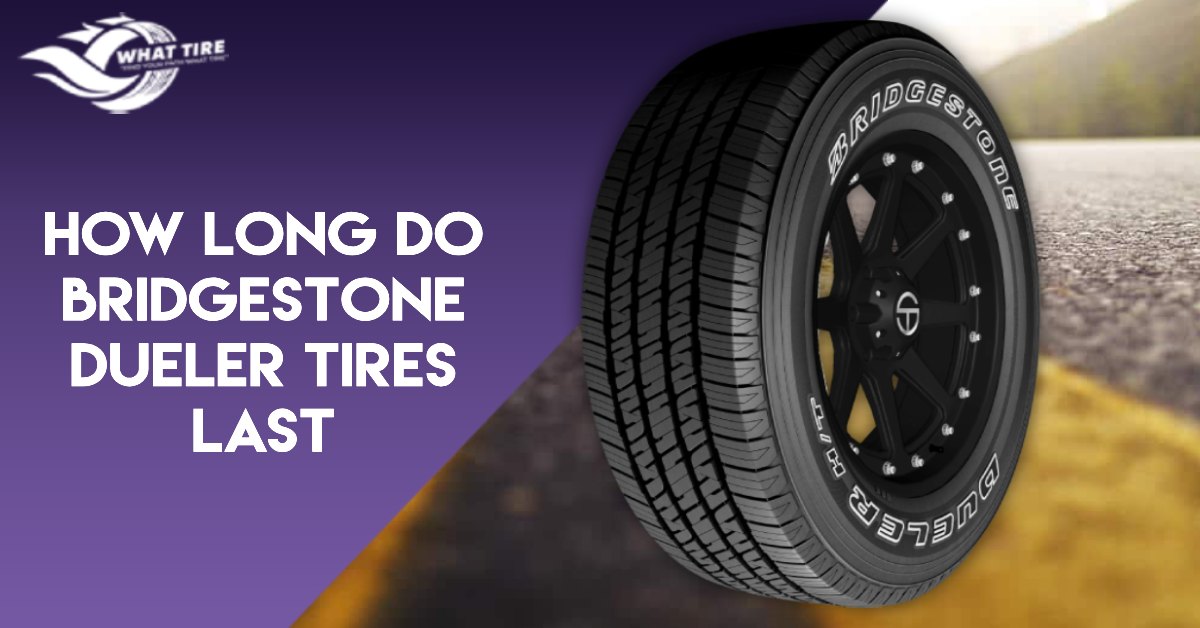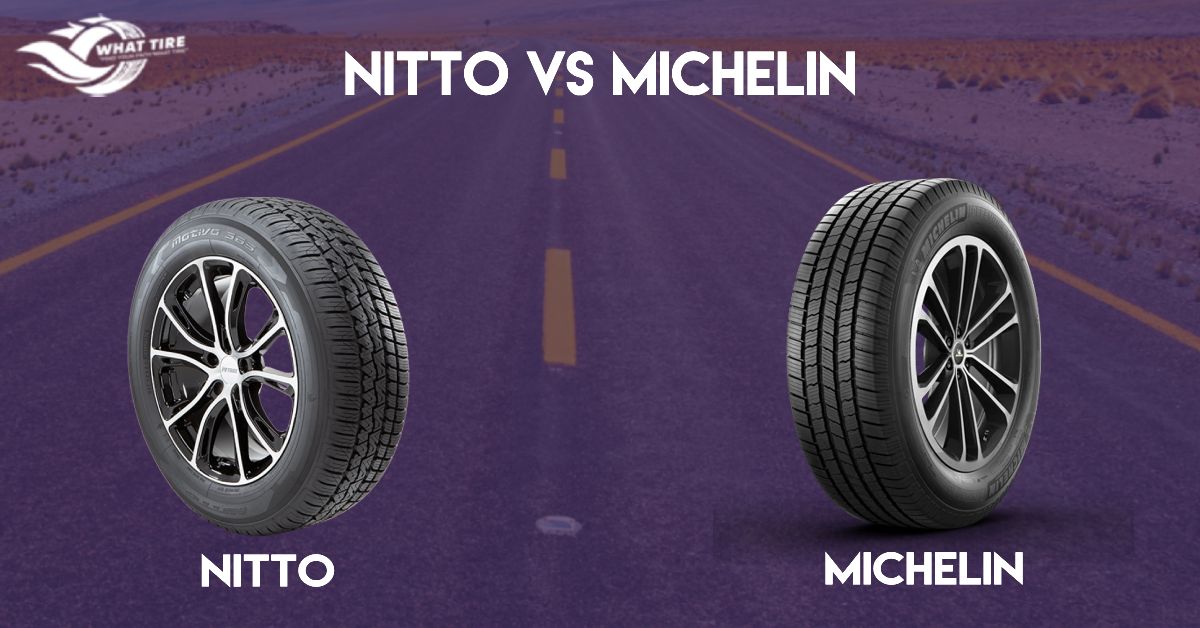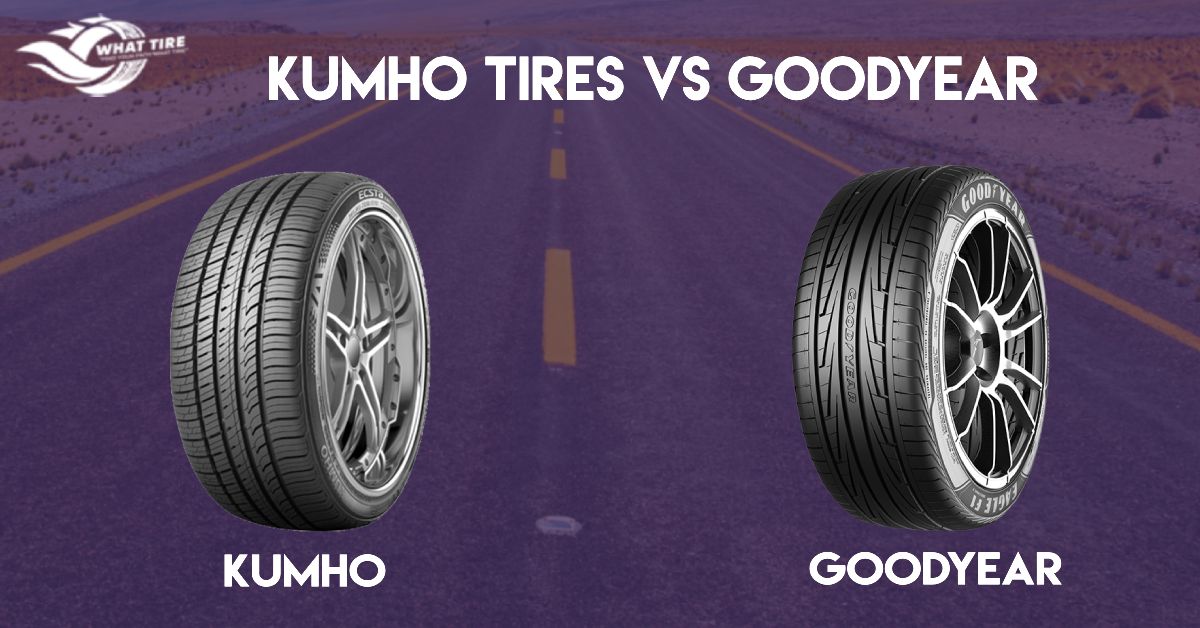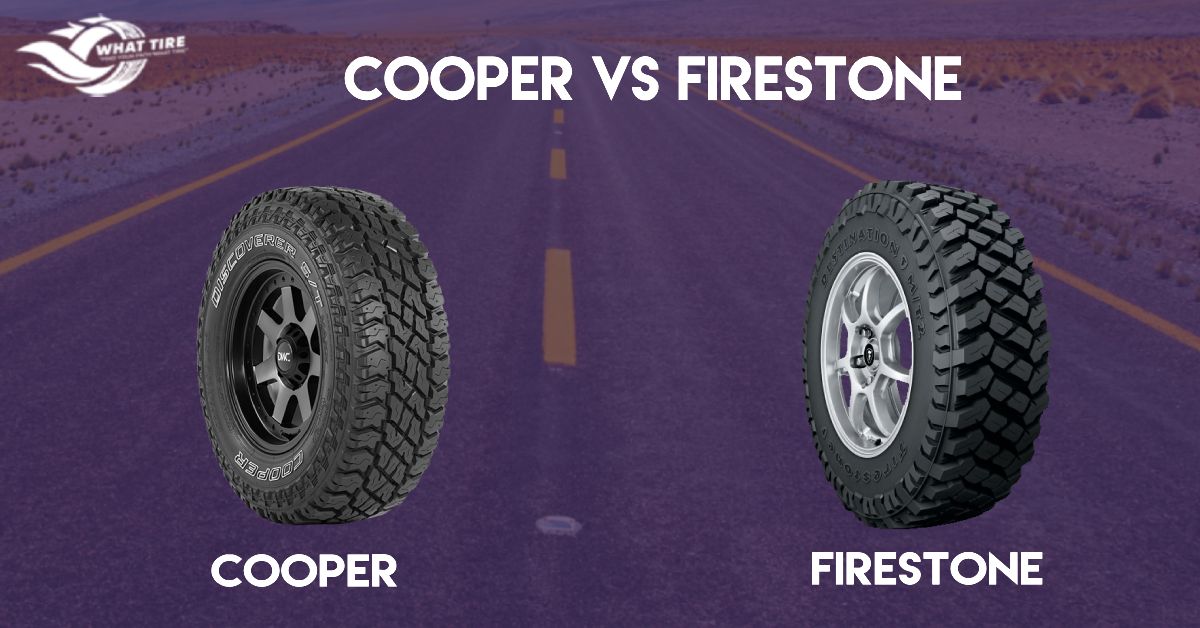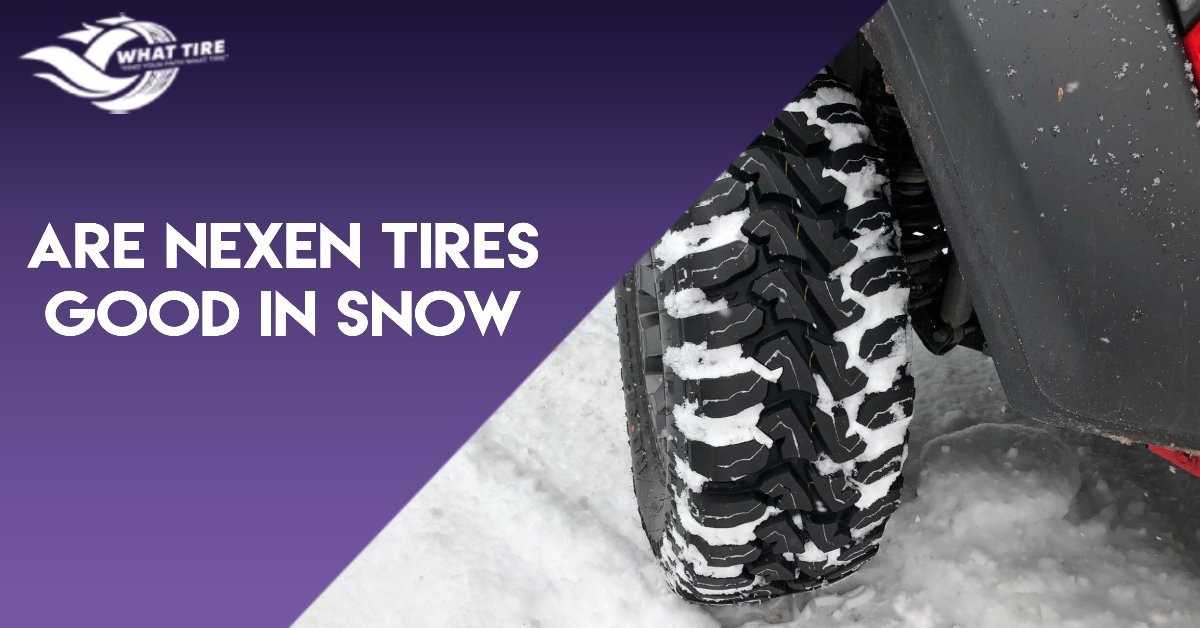This blog dives into a detailed comparison of their technical aspects, from tread design and rubber compounds to performance and durability.
By understanding the strengths and specialties of each brand, you can determine which tire best suits your needs.
Whether you’re looking for superior handling, long-lasting wear, or excellent all-weather performance, this comparison will help you choose the ideal tire for your vehicle.
Consequently, you’ll find the best option to meet your needs.
Kumho Tires Vs Goodyear is a crucial consideration for anyone wanting to optimize their vehicle’s performance. Let’s explore how Kumho and Goodyear stack up against each other.
Table of Contents
ToggleAbout Kumho Tires
Founded in 1960 in South Korea, Kumho Tires is known for its innovative materials and technologies. Their ESCOT technology optimizes tire shape and pressure distribution, enhancing durability and performance.
Kumho uses high silica compounds to improve wet traction and reduce rolling resistance. Their product range includes high-performance sports tires and reliable all-season options, catering to various driving needs.
About Goodyear Tires
Goodyear Tires, established in 1898 in Akron, Ohio, is a global leader in tire innovation. They pioneered RunOnFlat tires and used DuPont Kevlar for enhanced durability.
Goodyear’s Active Braking Technology shortens stopping distances in wet and dry conditions.
Their extensive range includes tires for all-weather conditions, high-performance sports, and rugged off-road use, focusing on safety and performance.
To better understand the performance of Kumho Tires Vs Goodyear, we’ll explore tread design, rubber compounds, performance in different conditions, durability, technological innovations, price and value for money, and warranty and support.
Tread Design
Tread design plays a pivotal role in tire performance, affecting traction, handling, and noise levels. Let’s compare in detail the tread designs of Kumho and Goodyear tires.
- Kumho Tires
Asymmetrical Tread Patterns: Kumho employs asymmetrical tread designs in models like the Ecsta series. These designs optimize dry and wet traction by having different patterns on the inner and outer parts of the tire. The inner tread focuses on water evacuation to combat hydroplaning, while the outer tread enhances cornering and stability.
Directional Tread Patterns: Found in the Solus series, Kumho’s directional tread patterns are engineered for improved hydroplaning resistance. These patterns feature V-shaped grooves that channel water away from the tire’s contact patch, enhancing wet traction and reducing the risk of skidding.
- Goodyear Tires
TripleTred Technology: Goodyear’s Assurance TripleTred tires utilize three distinct tread zones tailored for different conditions. The outer zone is designed for dry traction, the center zone enhances wet traction with aqua channel grooves, and the inner zone provides grip in snowy conditions. This multifaceted approach ensures balanced performance across varying weather.
Active CornerGrip Technology: In the Eagle F1 Asymmetric tires, Goodyear integrates Active CornerGrip technology. This technology features reinforced tread blocks on the tire’s outer edge, which improve cornering grip and stability at high speeds. The asymmetrical design also helps in maintaining optimal contact with the road during aggressive maneuvers.
Rubber Compounds
The composition of rubber compounds is crucial in determining a tire’s performance characteristics, including traction, durability, and fuel efficiency. Let’s compare the rubber compounds used by Kumho and Goodyear tires.
- Kumho Tires
Silica-Enriched Compounds: Kumho integrates high silica content in their tires, such as the Ecsta PA31. This compound improves wet traction and reduces rolling resistance, improving fuel efficiency.
Nano-Particle Technology: In high-performance models like the Ecsta PS91, Kumho employs nano-silica compounds. These provide superior grip in both dry and wet conditions, optimizing handling and braking performance.
- Goodyear Tires
DuPont Kevlar: Goodyear uses Kevlar-reinforced rubber in tires like the Wrangler All-Terrain Adventure. This compound enhances durability and resistance to punctures, particularly beneficial for off-road conditions.
Wear-Resistant Compounds: In models like the Assurance ComforTred Touring, Goodyear employs advanced wear-resistant rubber compounds. These compounds extend tire life while maintaining performance over prolonged use.
- Comparison
Both brands use advanced rubber technologies, but Kumho prioritizes performance and efficiency, while Goodyear excels in durability and extended tire life.
For a more in-depth understanding of Goodyear’s reliability and performance, you might want to explore the question: Are Goodyear Tires Any Good?
Performance in Different Conditions
Tire performance across different conditions is essential for ensuring safety and reliability. Let’s compare how Kumho and Goodyear tires perform in various driving environments.
- Kumho Tires
All-Season Performance: The Kumho Solus TA71 is engineered for all-season use, featuring a tread design that offers a comfortable ride and reliable traction in light snow. Its high silica content enhances wet grip and reduces hydroplaning risk.
Ultra High Performance: The Ecsta PS91 targets high-performance vehicles, providing superior handling and stability at high speeds. Its nano-silica compound ensures excellent dry and wet traction, making it suitable for spirited driving in various weather conditions.
- Goodyear Tires
All-Weather Capability: The Goodyear Vector 4Seasons Gen-3 excels in diverse weather conditions. It uses Weather Reactive Technology to adapt to seasonal changes, providing excellent traction on snow and ice without compromising wet and dry performance.
Off-Road Performance: The Goodyear Wrangler Duratrac is designed for rugged terrains, featuring TractiveGroove Technology for enhanced traction in mud and snow. Its self-cleaning shoulder blocks prevent debris buildup, maintaining optimal performance in off-road conditions.
- Comparison
Kumho excels in providing versatile, high-performance options vs Goodyear is known for its adaptability to extreme conditions and specialized uses.
Durability
Durability is a key factor in tire performance, affecting longevity and resistance to wear and damage. Let’s compare the durability features of Kumho and Goodyear tires.
- Kumho Tires
ESCOT Casing Technology: Kumho uses ESCOT technology to optimize tire footprint and distribute contact pressure evenly. This reduces irregular wear and extends tire life.
Extended Mileage: The Kumho Crugen HT51 is built for longevity, featuring a robust construction and extended mileage warranties, making it ideal for light trucks and SUVs.
- Goodyear Tires
Durawall Technology: Goodyear employs Durawall technology in models like the Wrangler MT/R with Kevlar. This reinforces sidewalls, enhancing resistance to cuts and punctures in tough driving conditions.
Long Tread Life: Goodyear’s Assurance MaxLife tires are designed with advanced tread compounds that provide up to 85,000 miles of tread life. This technology ensures long-lasting performance and wear resistance.
- Comparison
Both brands are durable. But Goodyear uses advanced materials and construction. This gives better protection in tough conditions.
Technological Innovations
Technological innovations are critical in enhancing tire performance, safety, and comfort. Let’s compare the technological advancements of Kumho and Goodyear tires.
- Kumho Tires
3D Dimple Design: Kumho’s 3D Dimple Design, found in the Ecsta LE Sport, reduces heat build-up, enhancing tire longevity and performance under high-stress conditions.
Variable Pitch Technology: This technology is used in many Kumho all-season tires to minimize road noise. It varies the alignment and spacing of tread blocks, providing a quieter ride without compromising performance.
- Goodyear Tires
RunOnFlat Technology: Goodyear’s RunOnFlat technology, available in models like the Eagle F1 Asymmetric, allows tires to continue functioning for up to 50 miles after a puncture, providing safety and convenience.
SoundComfort Technology: Featured in the Eagle F1 Asymmetric 3, this technology incorporates a foam layer inside the tire to reduce interior noise levels by up to 50%, enhancing ride comfort.
- Comparison
Both brands incorporate cutting-edge technologies, but Goodyear’s innovations are particularly geared toward enhancing safety and ride quality.
Price and Value for Money
Price and value for money are crucial considerations when selecting tires. Let’s compare the pricing strategies and value propositions of Kumho and Goodyear tires.
- Kumho Tires
Affordable Pricing: Kumho offers competitive pricing across its product range, making high-quality tires accessible to a broad market. Their tires, like the Solus TA71, provide excellent performance at a lower cost, offering great value for budget-conscious consumers.
Cost-Effective Performance: Despite their affordability, Kumho tires are designed with advanced technologies, such as high silica compounds and ESCOT technology, delivering reliable performance and durability without a premium price tag.
- Goodyear Tires
Premium Pricing: Goodyear’s tires generally come at a higher price point, reflecting their advanced materials and cutting-edge technologies. Models like the Assurance MaxLife offer long tread life and superior durability, justifying the premium cost.
Value Through Innovation: Goodyear tires cost more, but they come with cool features. For example, RunOnFlat helps you drive even if the tire is flat, and SoundComfort makes the ride quieter. So, even though they are pricey, these features give you great value if you want high-quality performance.
- Comparison
Kumho offers a more affordable pricing structure. Goodyear, on the other hand, commands higher prices but provides exceptional value through advanced innovations and premium performance.
Warranty and Support
Warranty and support are critical factors in evaluating the overall value of tires. Let’s compare the warranty and support offerings of Kumho and Goodyear tires.
- Kumho Tires
Warranty Coverage: Kumho provides competitive warranties, with many models like the Crugen HT51 offering mileage warranties up to 70,000 miles. Their warranties typically cover manufacturing defects and premature tread wear, providing peace of mind.
Customer Support: Kumho’s customer support includes a comprehensive network of service centers and online resources, ensuring assistance is readily available. Their responsive customer service is designed to address any issues promptly.
- Goodyear Tires
Warranty Coverage: Goodyear offers extensive warranty coverage, with premium models like the Assurance MaxLife featuring warranties up to 85,000 miles. These warranties cover tread wear and defects, often including road hazard protection for added security.
Customer Support: Goodyear has a robust support system with a wide network of authorized dealers and service centers. Their customer service is known for its efficiency and thoroughness, providing detailed support and assistance through various channels, including online and phone support.
- Comparison
Goodyear provides more extensive warranties. While Kumho ensures good value with strong support.
Comparison Table Of Kumho Tires Vs Goodyear Tires
Here’s a summary table comparing Kumho and Goodyear tires based on various aspects discussed:
| Aspect | Kumho Tires | Goodyear Tires | Verdict |
| Tread Design | Asymmetrical and directional patterns for balanced performance | TripleTred and Active CornerGrip for specialized traction | Goodyear |
| Rubber Compounds | Silica and nano-silica for enhanced grip | Kevlar-reinforced and wear-resistant for durability | Kumho |
| Performance in Conditions | All-season and UHP for versatile driving | All-weather and off-road capability for diverse conditions | Goodyear |
| Durability | ESCOT technology for even wear and longevity | Durawall and long tread life for enhanced durability | Goodyear |
| Technological Innovations | 3D Dimple and Variable Pitch for performance and comfort | RunOnFlat and SoundComfort for safety and comfort | Goodyear |
| Price and Value | Affordable pricing with advanced features | Premium pricing with innovative technologies | Kumho |
| Warranty and Support | Competitive warranties and responsive support | Extensive warranties and efficient customer service | Goodyear |
This table provides a concise overview of Kumho Tires Vs Goodyear tires compared across different aspects, highlighting the strengths of each brand and offering a verdict on which tire emerges as the winner in each category.
Conclusion
In the comparison between Kumho and Goodyear tires, both brands showcase strengths in different areas, offering diverse options for various driving needs.
Whether prioritizing performance, durability, or value, selecting between Kumho and Goodyear ultimately depends on individual preferences.
Additionally, specific driving conditions play a crucial role in making the best choice. Choose wisely for an optimal driving experience.

